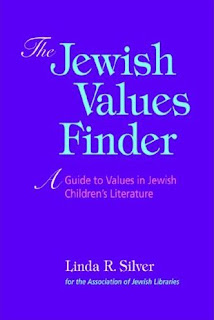 I am delighted to welcome Linda Silver to my blog. Linda is a specialist in Jewish children's literature. A retired librarian, Linda has worked in school and public libraries as well as in synagogue and Jewish educational libraries.
I am delighted to welcome Linda Silver to my blog. Linda is a specialist in Jewish children's literature. A retired librarian, Linda has worked in school and public libraries as well as in synagogue and Jewish educational libraries.
Her professional activities include leadership positions in the Association of Library Service to Children (ALSC/ALA) and in the Association of Jewish Libraries (AJL). She has been a member of the Newbery-Caldecott Committee, an ALSC board member, president of the School, Synagogue, and Center Division of AJL, president of the Cleveland AJL chapter, and chair of the Sydney Taylor Book Award Committee. In 2004, Linda received the AJL's Fanny Goldstein Merit Award in recognition of her contributions to the Association and to the profession of Judaic librarianship. She teaches workshops and gives talks on Jewish children's literature and writes about it extensively as a reviewer and co-editor of children's book reviews for the AJL Newsletter and as editor of the online Jewish Valuesfinder,www.ajljewishvalues.org.
Linda's most recent publication is a book published in 2008 by Neal-Schuman entitled The Jewish Values Finder: A Guide to Values in Jewish Children's Literature. Past publications include Jewish Classics for Kids (AJL, 2006), Excellence in Jewish Children’s Literature: A Guide for Book Selectors, Reviewers and Award Judges (AJL, 2003), and Developing a Judaic Children’s Collection (AJL, 2001) as well as many magazine, journal, and newspaper articles. Her current writing project is a guide to Jewish children's literature for the Jewish Publication Society. Linda lives with her husband in Cleveland, Ohio.
Linda’s contribution to children’s literature is inspiring. I’m honored that she was able to spend some time to share her knowledge and experience.
Tell me a little bit about the history of Jewish Values Finder and how parents, educators and librarians can access the information.
The predecessor of the Jewish Valuesfinder was Marcia Posner's Juvenile Judaica, a print publication that listed books of Jewish content, briefly described them, and gave their subjects and themes. After the first edition, which was published in 1985 and sold by AJL, several supplements were issued. Publication was suspended around 1995. In 2002, Marcia asked me to create a new publication that would continue her work in some form. She contributed the funds needed to develop the online guide, which was launched in 2003 and is accessible to anyone with a computer at www.ajljewishvalues.org. The publishing director at Neal-Schuman read an article about the Jewish Valuesfinder and contacted me, asking if I would write a book.
What drew you to create such a database?
Although more and more books of Jewish content for kids were being published, there was very little written about them. Individual reviews and short bibliographies existed but nothing that compiled all of that burgeoning literature on a continuous basis or evaluated it or identified it by the Jewish values embodied in it. As a Judaic librarian in synagogues and a bureau of Jewish education, I was very aware of how often parents and teachers looked for literature that was rich in Jewish values and how there were no guides to help find it.
This month the Jewish Values Finder was published in book form. How does the book differ from the web site? Will there be updated versions available every year?
The book contains information that the online does not, including a history of Jewish children's literature in America, selection criteria for books of Jewish content, collection development guidelines, and a list of Jewish publishers. While the online guide identifies books by more than 100 separate values, The Jewish Values Finder book organizes books by eighteen different values - each one conceptualized rather broadly. The chapter on mitzvot, for example, includes books that would be identified by many different mitzvot in the online guide. The book is portable; the online guide is not. The book is finite in the number of titles it contains whereas new titles are always being added to the online guide, which already contains books published in 2008. As for updates, I don't know what the publisher's plans are and suppose they depend on how well this book does.
If an author or publisher wants a book considered for inclusion in the Jewish Values Finder is there a submission process?
Anyone who wants a book for children or teens considered for the Valuesfinder can send me a copy for review. First, they should read about the criteria for selecting titles for inclusion in the Valuesfinder by going to www.ajljewishvalues.org. They can also email me at [email protected].
Do you see any significant trends in Jewish literature for children?
There's more Jewish "chicklit" being written and more novels for teens in general. Overall, they make me cringe: “chicklit" celebrates the very traits which sexist adult novels have always associated with women, traits that brand women as petty, materialistic, narcisistic, concerned mainly with their looks and how much money they can spend. The focus in most books for teens is on the self - on the main character and her or his personal, often narrow, concerns. There is very little sense of peoplehood or of being a part of the nation of Israel. In this sense, they are anti-Jewish.
Are there any books “missing” from the genre that you would like to see published?
The art of the picture book is one of the highest achievements in modern children's literature but there's little evidence of that among picture books of Jewish content, whose illustrations are usually banal or at best, pretty. I'm also struck by how conservative, how safe most books of Jewish content are. By this, I don't mean I yearn for the vulgarity that is so commercially successful in secular books for kids but I do wish there was more off-beat or experimental writing, more mischief, more fantasy. For this to happen, reviewers are going to have to be more welcoming of the off-beat and publishers less risk-averse.
Linda, thank you for your commitment to children’s literature!

Ann Hagman Cardinal is a freelance writer, novelist, columnist, as well as the National Marketing Director for Union Institute & University. Ann has a B.A. in Latino Studies from Norwich University and an M.A. in sociology and creative writing from Vermont College of UI&U. She is currently working on her MFA in Writing from Vermont College as well. Her column, Café Con Lupe, appears in the state-wide publication Vermont Woman. She just completed her second novel entitled La Mongosta & The Pirate and is hard at work on her third. She lives in Vermont with her husband Doug and son, Carlos. She is also the author of The Gift of the Cuentista, a breakout novel of depth, of roots, of Puerto Rican identity and and family. It is also the story of one's girl's odyssey to adulthood and the meaning of a very special gift of sight.
Ann is a sister of my heart, and she's also one of the Sister Chicas trio of authors. Leni was written by Ann as wry, tough/tender, with a soul deep as a hidden aquifer. This too, is Ann.
xxxxxxxxxxxxxxxxxxxxxxxxxxxxxxxx
Describe your journey in becoming a writer. How is it integrated with your identity as a woman, as a Latina? Can you talk about your major influences, both personally and in a literary sense?I never imagined I would be a writer until I returned to college as an adult student. Even then, if I
hadn’t have been at a non-traditional program where I was exposed to other students doing different kinds of studies I’m not sure I ever would have become one. I met some wonderful writers who encouraged me, and after a year of insisting, “I’m not a writer!” I got the bug. But it was inspired by my desire to pass on elements of my
Puerto Rican heritage and mother’s family to my son, Carlos. He never got to meet his
abuela, so it is a way to put him in touch with her. And it’s helped me identify with those roots as well.
The
cuentistas in my family, the storytellers that came before were my first influences. After that I was completely enthralled by Isabel Allende with her lyrical and beautifully written novels with their powerful political subtext. Also, Julia Alvarez is a wonderful writer, and I like that she publishes in different genres: novels, memoir, poetry, children’s literature. And Judith Ortiz
Cofer, I was so taken with Silent Dancing, I
didn’t realize it was a young adult book until after I read it. She has just the kind of clean but
elegant prose I admire.
What differences do you experience as a novelist vs. writing as essayist/columnist/journalist? What parts of yourself take the foreground...the background when you work in different genres?Good question. Well, as a novelist the answer depends on which novel I’m working on. I write literary fiction, but I love to write genre as well, horror, romance. These work different muscles than their literary sibling. The literary fiction is more taxing, pulling from a deeper place, while writing genre for me is pure joy.
As a columnist/journalist I feel like I am more of a sociological observer, mining stories and ideas from every day life. With my column
Café Con Lupe, I like to talk about things that resonate with people on a universal level. Not each column reaches everybody, but when I get feedback from someone who says, “Your story made me think of the time my own mother…” I love that! That means I’m reaching people, and really, that’s why I write.
What would you describe as your major themes? Issues of
outsiderness. As a light-skinned half
Puerto Rican I never felt totally at home in either world, and I’m amazed at how many people feel this way for different reasons. As I titled my most recent short story, I feel like a “Fish Out of
Agua.” In addition, I often write about children who lose their parents at a young age. Having gone through that I know that this is a loss only someone who has experienced can understand. It defines you as a child and as an adult. Also, I love to write about la
isla. That island and my family there are so damn important to me; they offer me a way to keep in touch with my mother.
What do you feel are your strengths as a writer....where would you like to see yourself grow?I’m a very visual learner, so I see things clearly in my mind as I write them. I’
ve been told that adds visual texture to my writing. I also love to write dialogue, and I listen intently to the way people talk and attempt to capture that.
As for growth, I’
ve learned so much over the last two years of my MFA program, I think my brain is full! But there are so many ways I would like to grow. I’
ve been trying to tackle short stories this last semester, and that is going to be a lifelong challenge as I find it a difficult form.
We collaborated in writing Sister Chicas... how would you describe the impact in crafting a novel in that way?
In past interviews I called it miraculous, and that has only become truer with time. To be able to learn from each other, and grow as a writer because of my connection to you two made it a
transformative experience. And it continues to amaze me that we were able to do it, no egos in the way, supporting each other with love and sisterhood. Miraculous.
You've made a choice to live in VT as a NYC transplant....How has that choice affected you life? Your writing?It’s funny, I
didn’t really identify with my Latina side until I moved here and the culture was no longer readily available. In NYC, I could walk down the street and hear
Boricua Spanish, smell
tostones frying from an open window, hear meringue pulsing from a car window. But in Vermont I have to actively seek out other Latinos. That has made for some incredible connections, including meeting you and Jane! I’m also not sure I would have become a writer in NYC, it was finding a progressive education program that opened me up.
I love it here. My mother used to say it reminded her of
Puerto Rico in the 30s with its rolling green hills, slow pace, and warm people. It’s a great place to raise a child.
You're a wife and a parent; in what ways do you feel those roles intersect with your life as a writer?I think it is impossible to separate them out. I learned when I went to a writer’s residency last year, and my son broke his arm and I
couldn’t be there, that I write better having him and my husband near me. I need to know they are safe and well to create. My son is the reason I write, really. My column deals a lot with my marriage and certainly parenthood. In that venue I aspire to be the modern Latina Erma
Bombeck. Life is so bizarre and humorous, and we all need our diversions. Her writing and viewpoint made day to day life lighter.
Where do you see yourself in ten years, personally and creatively?Still writing novels, and maybe with enough financial stability that I can do it more than on the fly. My goal is to not have to fit my writing in between everything else. To make it a main course and not just a side dish of my life. By then my son will be at college, and I hope to have a condo in
Luquillo so my husband and I can go down there for a couple of months each winter. Though I love Vermont, the 40 below zero thing kind of sucks.
What's something not in the official bio? I love tattoos. My sister was a tattoo artist and is getting me back into them in my middle age. They
ain’t what they used to be and I just wrote a piece for
AARP Magazine about the trend of getting tattooed after 50. Life is too short to not be inked.
xxxxxxxxxxxxxxxxxxxxxxxxxxxxxxxx
An excerpt from
The Gift of the Cuentista:
My mother's Uncle Javier lived next door, and I would spend each visit running back and forth between the houses with my
Puerto Rican cousins, skinning my knees and pulling my second language out from under the cedar blocks of winter storage in New Jersey, where the only Spanish I heard was at the local bodega where Mom bought her guava paste. After a few days of shyness, I would begin to feel comfortable with the other children, following along where they led, playing the games they played.
But among them I always knew I was different: larger, pastier, louder. I longed to be like them, switching so easily from elegant
Español to an English that was more grammatical than my own. I watched their lithe bodies move easily among the adults, answering questions about school with enthusiasm, joining the conversations about art, culture and history. I sat on the periphery of these gatherings feeling thick-tongued and unable to speak in either language, watching the adults throw their heads back in laughter over something my cousin Maria had said. I looked at my play clothes that had seemed fine alongside the neighborhood kids in New Jersey, but on the island felt shoddy and mismatched; at my
un-groomed hair, too short and boyish.
When my visits expanded to the entire summer, I learned to adjust to my life on the island, and then back again when I returned to our cold suburban home. Sometimes, on the flight home in late August, I would think about how I seemed to be most comfortable there, among the clouds high above the Atlantic Ocean, halfway between the two places.
My cousins did their best to make me feel welcome on their island. They were, quite honestly, much nicer children than I was. They were always polite, always thoughtful, and I would try to emulate them after I left each year, but this unnatural decorum would usually only last a week…maybe two. They were all about my age, and together we ran through Javier's one-story, concrete house at top speed, sliding over the slick, tiled floors, as adult reprimands in rapid-fire Spanish trailed after us like a kite tail. We had to pass through the last room, a bedroom, before we broke free of the building and barreled into the back courtyard, scattering chickens and dust in every direction.
The first time I encountered one of the room's inhabitants, I stopped short at the threshold, staring at the unexpected occupant on the shadowed bed. My cousins collided into me from behind, and seeing my apprehension they said, “Don't worry about her,
prima,” as they pushed around me and pulled at my arms, taunting me to follow them through the darkened room. “She can’t hear you.
Vamos!”
I could smell the room before I entered it. Medicinal. Antiseptic. Stale. I pulled free of my cousins, my feet rooted to the
doorsill, hearing their jeering voices fade as they scampered out into the daylight. I looked down at the scrubbed white Formica floor, the gray and blue dots forming moving patterns if you stared at them long enough.
Tía Lourdes made sure the room was spotless. She had been a nurse, and so the care of the infirm family members often fell to her. The lights were low, the bright afternoon glare permitted entry only through the wooden louvers that covered the windows, a narrow stream of sunshine spilling through the partially open back door, still swinging from my cousin Carlos’ escape.
A large wooden crucifix was the only decoration on the white stucco walls, the graphic dying figure of Jesus a ghastly contrast to the room’s sterility. Because of the near darkness, it was at least ten degrees cooler than anywhere else in the house. And there she was. An ancient female relative—my cousins
couldn’t even tell me whose—or the shell of one, lying on the bed to the left of the door, connected to a maze of medical tubes like the tentacles of a pale jellyfish. I could feel a current of anxiety running through my limbs. After a time, I decided I would steal quietly but quickly through the room, not looking over at the bed. I made it halfway across when a crackly voice emerged from the still, waxen figure under the white chenille bedspread.
“¡
Ay Virgen! ¡
Madre de Dios!” she yelled. I jumped and tore into the backyard, temporarily blinded by the summer sun, but grateful to be free. I avoided the room for the rest of that visit. Not because I thought I would disturb her—she was completely unaware of the youthful activity around her—but because I felt a reverence in the presence of one whom my cousin Inez told me was so near death. But also a fascination. I would occasionally peer through the slatted windows from the safety of the concrete courtyard, the sun on the back of my head reminding me that I was still outside the room, away from her spell.
But she was just the first: every year from then on there seemed to be a new old lady lying sentry in the rear chamber. To my cousins, these women barely existed. Each day they screeched through the room, bellowing to each other along the way. But it was easy for them. They
didn’t have to worry about the old woman coming back to them after death: that honor was reserved for me.
xxxxxxxxxxxxxxxxxxxxxxxxxxxxxxxx
Some last thoughts: In
Gift of the Cuentista, Ann paints a picture of a young girl's struggle to know herself, to know her family, to be comfortable in her skin literally and figuratively that burns itself into the mind's eye. In this passage alone, we taste, see and smell this small universe in which someone looks for home and begins to see out what a long, long, trip it truly is.
Lisa Alvarado



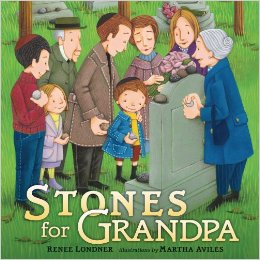





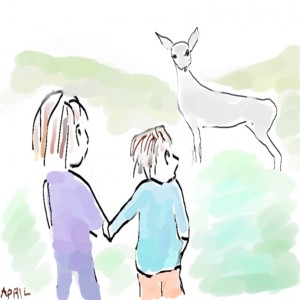


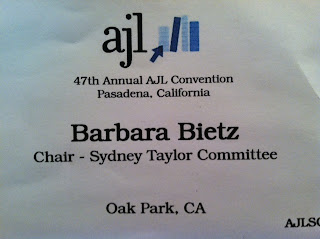
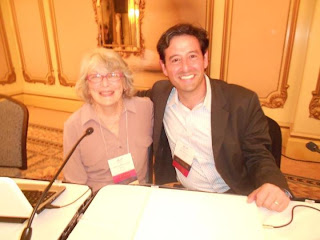




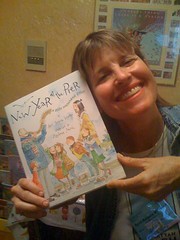
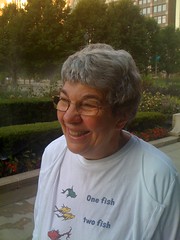
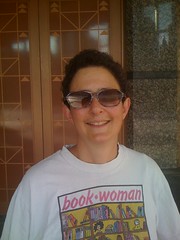
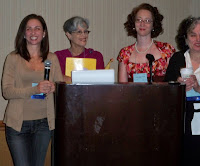


Wish I was there!
We missed you so much!